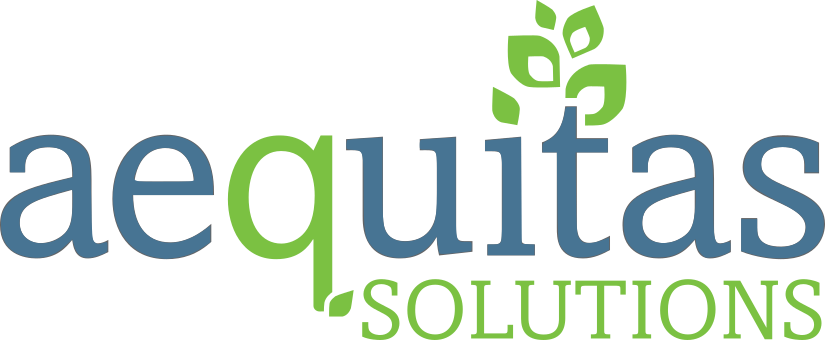Academic progress, attendance, behavior, social-emotional learning, and family engagement all shape a student’s journey. But too often, schools rely on multiple disconnected EdTech systems to collect and track this data. When data is spread across different platforms, educators can struggle to see the full picture, making it harder to identify at-risk students and provide the right support at the right time.
A Student Information System (SIS) that offers intuitive ways to access data eliminates these silos by surfacing comprehensive student data in a central platform. With real-time access to academic, attendance, and behavioral insights, educators can make informed decisions, streamline interventions, and improve student outcomes. In this blog, we’ll explore the limitations of disparate systems, the benefits of a unified “data-first” SIS, and how schools can find a vendor that offers an SIS solution to support the whole student.
The Challenge of Disconnected EdTech Systems
Many districts rely on a patchwork of EdTech tools—one for enrollment, another for attendance and grading, a separate system for behavior tracking, and another for interventions. While each tool can serve a purpose, they often don’t communicate well with one another, which can create significant challenges.
1. Fragmented Student Data
Educators must manually compile information from different sources when schools use separate platforms to track student progress. A counselor may need attendance data from one system, discipline reports from another, and academic performance records from another. This process is time-consuming and eats away at more meaningful initiatives.
2. Missed Opportunities for Early Intervention
Usually, students who need support show signs early, but these patterns can go unnoticed when data is scattered across multiple systems. Without a unified SIS, educators might not realize that a student struggling with behavior is also experiencing a drop in academic performance, delaying intervention efforts.
3. Inefficient Collaboration Among Educators
Effective student support requires collaboration between teachers, counselors, administrators, and families. However, when different teams rely on separate systems, it can create communication gaps. A teacher may not be aware of a student’s recent disciplinary actions, or a counselor might lack access to updated academic performance data.
How an Integrated SIS Drives Whole Student Success
A comprehensive SIS eliminates these roadblocks by consolidating student data and cross-team workflows into a single platform. With activities managed and insights delivered in one place, educators can take proactive steps to support students before small challenges turn into bigger problems.
1. Identifying At-Risk Students Sooner
With an integrated SIS, schools can track key indicators—attendance trends, grade fluctuations, and behavioral patterns—all in real-time. Instead of waiting for report cards to spot a struggling student, teachers can intervene when early signs of struggles appear.
2. Creating and Managing Effective Intervention Plans
A SIS that supports whole-student education simplifies developing, tracking, and adjusting intervention strategies. Educators can set goals, assign support plans, and monitor progress all in one system. This unified approach ensures that no student falls through the cracks because staff can easily see which interventions are working and which need to be adjusted.
3. Enhancing MTSS and Tiered Support Strategies
A comprehensive SIS is a game-changer for districts using Multi-Tiered Systems of Support (MTSS). Instead of piecing together data from different systems, schools can track interventions at all levels. By having a centralized intervention dashboard, educators can monitor progress, adjust strategies, and ensure that students receive the right level of support at the right time.
4. Improving Communication Between Educators, Parents, and Students
Family engagement is an important factor in student success, but it’s difficult to keep parents informed when schools use multiple disconnected systems. With an integrated SIS, schools can offer:
- Parent and student portals for real-time access to grades, attendance, and assignments
- Automated notifications for absences, missing assignments, and upcoming deadlines
- A single communication hub where parents, teachers, and counselors can collaborate
This transparency and accessibility strengthen relationships between schools and families, creating a more supportive learning environment.
5. Supporting the Whole Student Beyond Academics
Success isn’t just about grades. A well-rounded education includes social-emotional learning, wellness initiatives, and extracurricular participation. An integrated SIS allows schools to:
- Track social-emotional learning (SEL) programs and student participation
- Monitor mental health and counseling services
- Identify students who may need additional wraparound services
By taking a holistic approach to student success, schools can make sure every student has the support they need inside and outside the classroom.
Finding the Right SIS Vendor to Support the Whole Student
Selecting the right Student Information System vendor is one of the most important technology decisions a district can make. A comprehensive SIS should go beyond basic workflow management; it should unify and make accessible student data across attendance, grades, behavior tracking, intervention planning, communication, and more.
Look for a Fully Integrated System
Many SIS vendors offer standalone products that require third-party add-ons for functions like attendance tracking, discipline management, or intervention planning. While these third-party add-ons may seem like a solution, they often create the same data silos that districts are trying to eliminate.
A comprehensive SIS should have tools for monitoring student progress, flagging at-risk students, and managing interventions all within one system. This unified approach gives educators real-time access to the full picture without needing to piece together information from multiple sources.
Prioritize a User-Friendly Experience
A comprehensive SIS should be easy to use for everyone, from teachers and administrators to parents and students. Look for intuitive dashboards, real-time reporting, and automated alerts that help educators make timely and informed decisions.
Parent and student portals should be integrated to ensure transparency and engagement. If an SIS requires multiple logins, complex navigation, or excessive training to perform basic tasks, it may not be the best fit for your district.
Evaluate the Vendor’s Support Services
Switching to a new SIS is a major transition, and a vendor’s level of support can make all the difference. The best SIS providers offer seamless data migration, training programs, and ongoing customer support to ensure districts get the most value from their investment. A vendor that prioritizes customer success will provide not just a system, but a true partnership.
Ensure the SIS Can Scale with Your District’s Needs
A district’s needs will evolve, and an SIS should be able to grow alongside them. Whether expanding to include new features, integrating with state reporting requirements, or accommodating changing enrollment, a comprehensive SIS should be flexible, adaptable, and designed for long-term success.
Find a Vendor That Supports Whole-Student Success
A modern SIS should do more than store data—it should help districts take meaningful action to support students. Look for a vendor that prioritizes features such as early warning indicators, intervention tracking, and Multi-Tiered System of Supports to help educators proactively address student needs. The best SIS solutions enable schools to move beyond data collection and focus on data-driven decision-making that leads to real student growth.
Create a Strong Foundation for Student Success with Your SIS
Every student’s journey is unique, but one thing remains constant: success depends on timely, informed decisions. When districts rely on multiple disconnected EdTech tools, critical student data becomes fragmented, making it harder for educators to see the full picture. This approach can lead to missed opportunities for early intervention, inefficient collaboration, and unnecessary administrative burdens.
An integrated SIS eliminates these challenges by bringing all student data into one place, ensuring educators, administrators, and families have the insights they need to provide meaningful support. With a comprehensive SIS, schools can move beyond data collection and take real action—identifying at-risk students earlier, developing more effective intervention plans, and creating stronger family engagement.
Schools can create a stronger, more student-centered learning environment by choosing an SIS that works for them, not against them. With Q SIS, districts can seamlessly integrate their data, improve collaboration, and ensure that every student gets the support they need. Schedule a demo today to see how Q can transform student success in your district.


